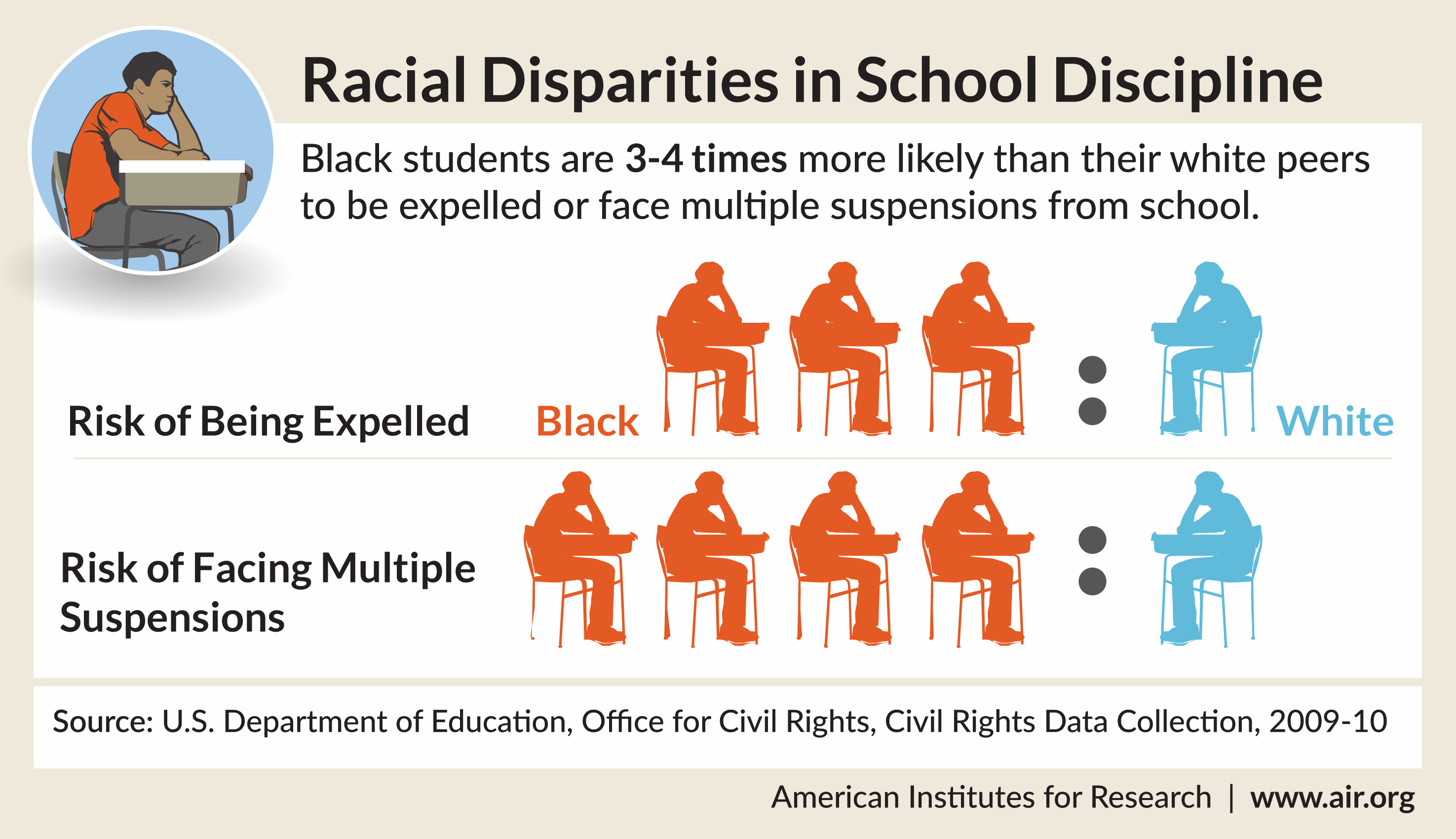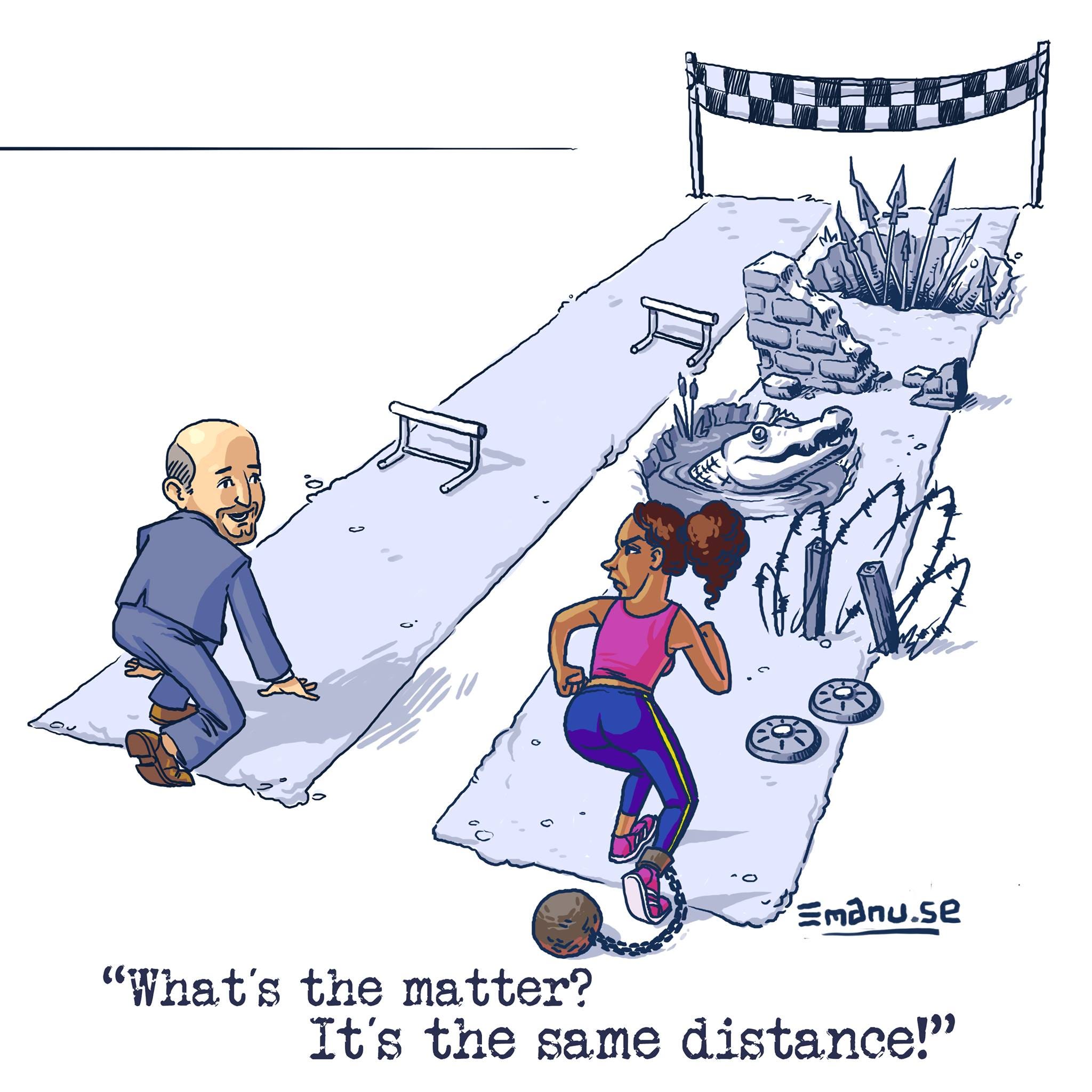During the past week, I have had friends declare on Facebook that they are reasonably intelligent, well-educated white women and yet they had never heard of Juneteeth before this year. I confess I had not heard of it until two or three years ago myself.
One of the women asked, “When is public education policy going to enter the racism conversation? I’m angry at the things I was never taught in school and am learning now in my 40’s. I am horrified and embarrassed at my own ignorance.”
That ignorance is an example of how racism permeates the U.S. public school system.

Last week, I wrote about how the Pygmalion effect creates two distinct school environments for students that teachers unconsciously categorize as “capable” and “less capable”. I listed student characteristics that contribute to teachers labeling students as “less capable”. Having black or brown skin topped that list.
I stressed that teachers do this mental categorization unconsciously. I believe that; yet whether or not the process is unconscious, it is part and parcel of implicit bias.
More information on the Pygmalion Effect and Black students can be found here:
- At the K-12 level https://exclusive.multibriefs.com/content/why-minority-students-get-bad-grades-the-pygmalion-effect/education
- At the college level https://files.eric.ed.gov/fulltext/ED564606.pdf
Implicit bias is the term used for the attitudes or stereotypes that affect our understanding, actions, and decisions in an unconscious manner.
Much of implicit bias comes out in the classroom in the form of “microagressions”. Wikipedia and other online sources define “microagression” as “brief and commonplace daily verbal, behavioral, or environmental indignities, whether intentional or unintentional, that communicate hostile, derogatory, or negative prejudicial slights and insults toward any group, particularly culturally marginalized groups “.
Interestingly enough, when doing the research for today’s blog, I found only one article that focused on microagressions in the K-12 classroom. The rest of the information I found was generated by colleges and attempting to remove these from college classrooms.
Still the lists of sample microagressions are relevant to K-12 teachers!
I recommend the following resources to learn more about microagression and what to do about it:
- Implicit Bias and Microagressions (Edutopia) https://www.edutopia.org/article/look-implicit-bias-and-microaggressions
- An article about removing microagressions from the classroom https://www.amle.org/BrowsebyTopic/WhatsNew/WNDet.aspx?ArtMID=888&ArticleID=1081
- A list of examples of microagressions https://www.messiah.edu/download/downloads/id/921/Microaggressions_in_the_Classroom.pdf
Implicit bias in teacher behavior is one aspect of how educational experiences are different for white students and Black students in the same school. There is a persistent gap in academic achievement between white and Black and minority students. There is also a significant difference in how each group is disciplined.
In some studies on how students are disciplined, Black students, especially males, were ten times more likely to be suspended or expelled for their behavior. Other studies report the figures as 10% to 16%.
I submit that part of the reason why Black students receive more hash discipline in K-12 schools starts in the earliest years of schooling. Children who are viewed as “less capable” by teachers, even though this may be unconscious, have appreciably different educational experiences than do those viewed as “capable”.
These radically different educational experiences cannot help but affect how children view schooling and how they view their ability to acquire an education. Immature people do not express their displeasure at how they feel in mature ways. Instead, they lash out, act out, become sullen, restless, fidgety, and “cop an attitude”.
I dare say adults would probably resort to being less than well-behaved if we were in similar circumstances.
If you would like to read more about the disparity between how Black and Brown students and white students are disciplined in school, I recommend these resources:
- Racial disparity in school discipline https://www.pnas.org/content/116/17/8255
- Students of color 10 times more likely to be disciplined in school https://journals.sagepub.com/doi/10.1177/2332858419844613
- https://www.brookings.edu/research/disproportionality-in-student-discipline-connecting-policy-to-research/
Historians and social studies teachers are likely to say, “Those who do not learn from history are doomed to repeat it.”
Another applicable quote is, “History is written by the victors.” The origin of the quote is disputed, yet it points out a truth about the perspective of history taught in schools.
Education within a society is geared towards producing upstanding citizens of that society. This aspect of school curriculum was much more apparent during the “Red Scare” of the 1950s and 1960s. Civics and social studies texts of that time unabashedly promoted the idea that U.S. citizens held certain values and rejected all forms of Communism.
We would like to think our curricula and social studies textbooks today are free of bias, but they are not.
Numerous studies have been done of who and what is examined in textbooks. These began as early as the 1970s. These studies showed that people of color were added to textbooks as sidebars, a bit of information that was set off from the rest of the text, and, as a result were often overlooked or skipped as unnecessary. (Similar “inclusion” can be seen in science textbooks.)
One can only describe this method of inclusion as marginalization. Literally!
Reading the content of textbooks gives more insight into how “history is written by the victors”. Not too many years ago, McGraw Hill, a major textbook company, was righteously called on the carpet for describing enslaved humans as “workers” and the slave trade as “migration of workers” to “agricultural plantations”.
Labeled as outright racism, the textbook company said they would change their online books to more accurately reflect the slave trade, but the in-print books were already in circulation.
I don’t know about your school district, but the ones in which I worked did not purchase social studies books very often, so I expect those books will be in circulation for some time!
Many schools do not use social studies or history textbooks. They use multiple resources to meet their state standards. These resources may be up to the teacher, or up to the curriculum director, or up to the state.
Another example of history being written by the victors played out in Texas not too many years ago. A very conservative person became the head of the Texas state level school board. Under his direction, the state’s social studies curriculum was overhauled.
The result was
- Slavery and the slave trade were down-played.
- The African-American diaspora or any events in history involving African Americans was not mentioned until the Civil Rights Movement.
- Jim Crow laws and segregation were removed from information on the rise of the Civil Rights movement.
- Dr. Martin Luther King, Jr., was barely mentioned.
Those are just a few of the revisions to history this particular set of state standards made.
If you would like to learn more about how K-12 textbooks whitewash history, I suggest these resources:
- How textbooks came to be white-focused https://www.zinnedproject.org/materials/whitewashing-our-past/
- Example of revisionist history in the 21st Century https://theresponsibleconsumer.wordpress.com/texas-school-book-scandel/#The%2021st%20Century%20Textbook%20Fight
- A comparison on textbooks used in different parts of the US https://www.nytimes.com/interactive/2020/01/12/us/texas-vs-california-history-textbooks.html
- How the distortion of history education affects students https://ljsj.files.wordpress.com/2017/05/ljsj-v-7_houchin2.pdf
- Avoiding Curriculum Violence https://www.tolerance.org/magazine/spring-2020/ending-curriculum-violence
So what does all this mean for Black and Brown students?
One result is the academic achievement gap. Another is what is referred to as the “school to prison pipeline. You can read more about that at the Teaching Tolerance website: https://www.tolerance.org/magazine/spring-2013/the-school-to-prison-pipeline
The most recent statistics I could find show that 80% of the nation’s teachers are white. Yet only 44% of K-12 students are reported as white. This means that the majority of Black or minority children never have a teacher who looks like them. Research on this phenomenon is very clear: all students benefit when they have Black or minority teachers.
You can read more about that research here: https://journalistsresource.org/studies/society/education/minority-teachers-students-same-race-research/
[Many factors influence recruitment of Black and minority teachers at the college level. I won’t go into those in this blog at this time.]
All of the information I’ve touched upon has been the subject of many studies. It all adds up to the fact that the current way we educate children helps perpetuate the marginalization of African-Americans and minorities. In other words, our education system as it stands right now supports racism in the U.S.
What can an individual teacher do about it?
First of all, each teacher must search his/her heart and soul and recognize that we contribute to this! It is not easy to do. It is not fun. But it is vitally necessary!
Second, we must address implicit bias, the Pygmalion Effect, and microagressions. That can mean having some very uncomfortable conversations with our students, our colleagues, administration, and the community. That takes bravery and a willingness to listen. However, it takes brave souls to be teachers, so we can do it!
Third, we have to step up to be part curriculum teams. We need to point out to students that textbooks don’t always get it right. And we need to promote thinking in our students, not just memorization of facts and figures.
I believe education is the most important activity in which a society engages because it shapes the future of that society and the world. I believe educators are the most important part of education. They can sit back and let others shape education for them, or they can stand up and help do the shaping.
We can do this! We MUST do this!


